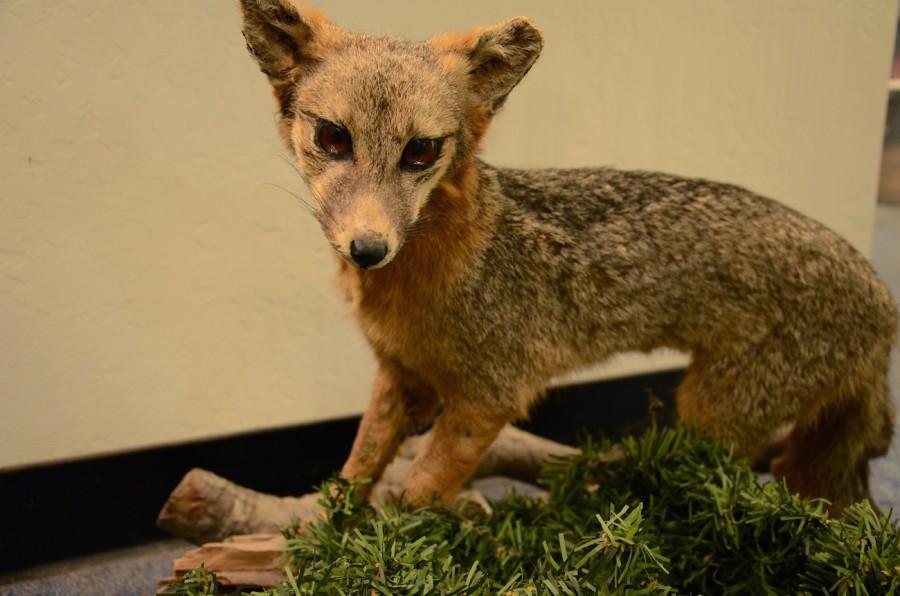Endangered species in California
From behind a thicket of bamboo shrubs, a glimmer of gold catches the tourist’s eye. He shuffles quietly, making his way closer and closer. Peering past the bushes, the tourist sees a tortoise with a variegated shell of burnt bronze and golden ridges. The stolid animal barely blinks at his presence as he gawks at its shell. However, as the tourist examines the reptile more closely, he sees that its back is marred with random engravings of letters and numbers.
This tortoise is the ploughshare, an endangered animal highly coveted for its golden shell. Seeking to protect the ploughshare, conservationists have begun to graffiti their shells to reduce their allure to collectors.
Ploughshares are endemic to Madagascar, and around only 600 tortoises remain in the wild. The ploughshare is in high demand in Asia, particularly China, Indonesia, and Thailand, where collectors are willing to pay upwards of $50000 for an adult.
While the ploughshare may be garnering national attention, many other species are threatened or endangered as well. In California today, there are a total of 303 species that have been state listed as endangered, threatened or rare. Compared to the 302 species in 2005, this number has remained almost identical.
When looking at endangered animals though, the number has nearly doubled since 2005. Animal populations naturally fluctuate, but urbanization has had a negative effect on animal wildlife.
“There are so many factors that play a role in diminishing wildlife species, and most of them are human caused,” said Ashley Kinney, Wildlife Rehabilitation Supervisor at Wildlife Center of Silicon Valley. “Some of those factors include lack of native plants, diminishing habitats, lack of food, water and shelter, feral cat populations, human overpopulation and continuous encroachment on native habitats.”
Living in the Bay Area, students increasingly focused on entering STEM fields may wonder why wildlife, which seems like the antithesis of what Silicon Valley represents today, is so important. Besides providing important commodities such as clothes, food, shelter and even medicine, wildlife contributes to the economy and corresponds to the health of the human population.
Kinney believes that way students can help wildlife conservation by promoting awareness of endangered animal species.
“Educate friends and family about human impact on the environment [and] understand that there are so many ways to help on a day to day basis,” she said. “Do all you can to ensure we will not see another native species [go] extinct.”
To keep track of endangered species, visit The U.S. Fish and Wildlife Service website, which constantly observes and updates lists of endangered species.

Kaitlin Hsu (11) is the Editor-in-Chief of Wingspan Magazine. In her freshmen year, she was a reporter, and in her sophomore year, she was the Features...


















![“[Building nerf blasters] became this outlet of creativity for me that hasn't been matched by anything else. The process [of] making a build complete to your desire is such a painstakingly difficult process, but I've had to learn from [the skills needed from] soldering to proper painting. There's so many different options for everything, if you think about it, it exists. The best part is [that] if it doesn't exist, you can build it yourself," Ishaan Parate said.](https://harkeraquila.com/wp-content/uploads/2022/08/DSC_8149-900x604.jpg)




![“When I came into high school, I was ready to be a follower. But DECA was a game changer for me. It helped me overcome my fear of public speaking, and it's played such a major role in who I've become today. To be able to successfully lead a chapter of 150 students, an officer team and be one of the upperclassmen I once really admired is something I'm [really] proud of,” Anvitha Tummala ('21) said.](https://harkeraquila.com/wp-content/uploads/2021/07/Screen-Shot-2021-07-25-at-9.50.05-AM-900x594.png)







![“I think getting up in the morning and having a sense of purpose [is exciting]. I think without a certain amount of drive, life is kind of obsolete and mundane, and I think having that every single day is what makes each day unique and kind of makes life exciting,” Neymika Jain (12) said.](https://harkeraquila.com/wp-content/uploads/2017/06/Screen-Shot-2017-06-03-at-4.54.16-PM.png)








![“My slogan is ‘slow feet, don’t eat, and I’m hungry.’ You need to run fast to get where you are–you aren't going to get those championships if you aren't fast,” Angel Cervantes (12) said. “I want to do well in school on my tests and in track and win championships for my team. I live by that, [and] I can do that anywhere: in the classroom or on the field.”](https://harkeraquila.com/wp-content/uploads/2018/06/DSC5146-900x601.jpg)
![“[Volleyball has] taught me how to fall correctly, and another thing it taught is that you don’t have to be the best at something to be good at it. If you just hit the ball in a smart way, then it still scores points and you’re good at it. You could be a background player and still make a much bigger impact on the team than you would think,” Anya Gert (’20) said.](https://harkeraquila.com/wp-content/uploads/2020/06/AnnaGert_JinTuan_HoHPhotoEdited-600x900.jpeg)

![“I'm not nearly there yet, but [my confidence has] definitely been getting better since I was pretty shy and timid coming into Harker my freshman year. I know that there's a lot of people that are really confident in what they do, and I really admire them. Everyone's so driven and that has really pushed me to kind of try to find my own place in high school and be more confident,” Alyssa Huang (’20) said.](https://harkeraquila.com/wp-content/uploads/2020/06/AlyssaHuang_EmilyChen_HoHPhoto-900x749.jpeg)



